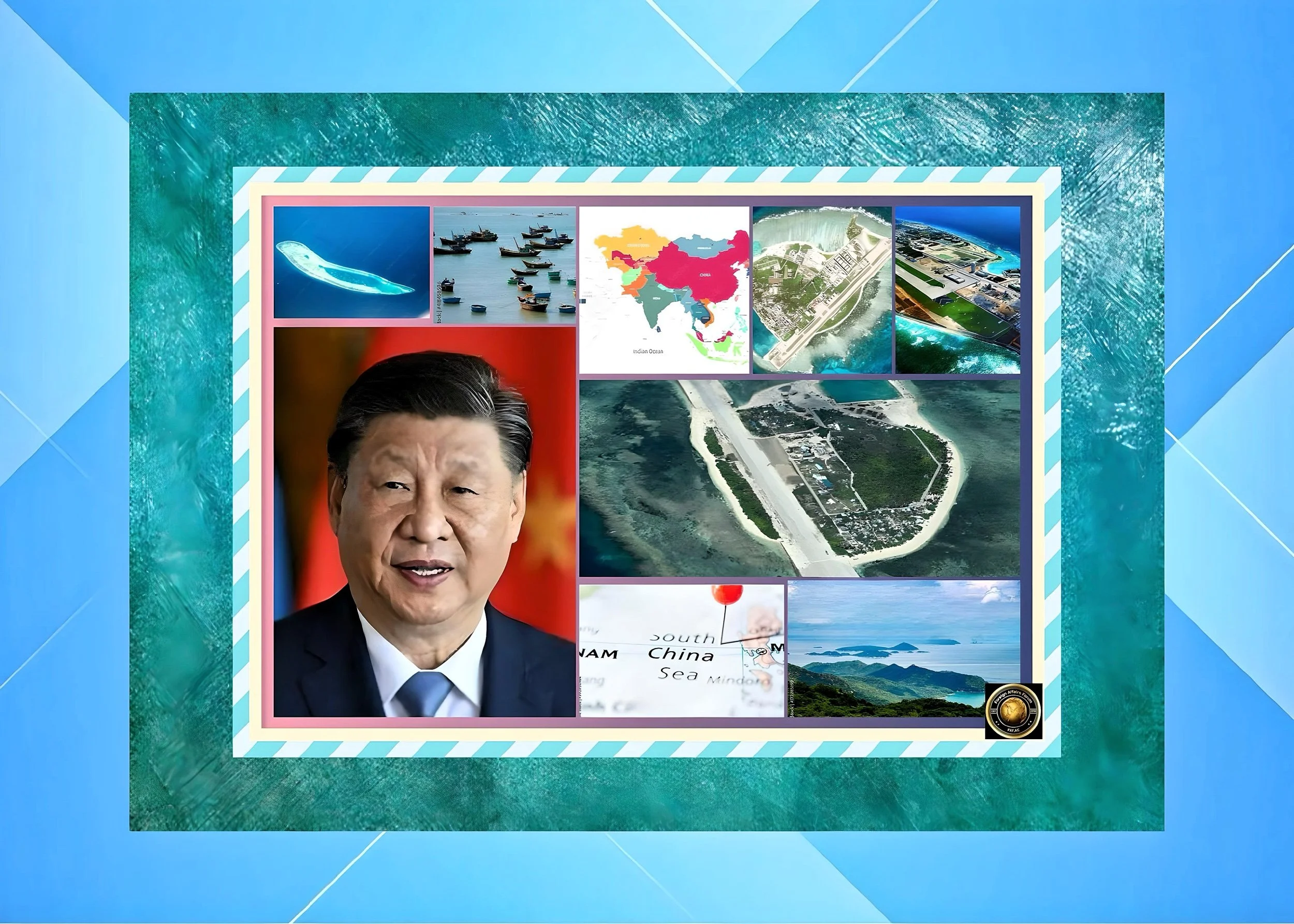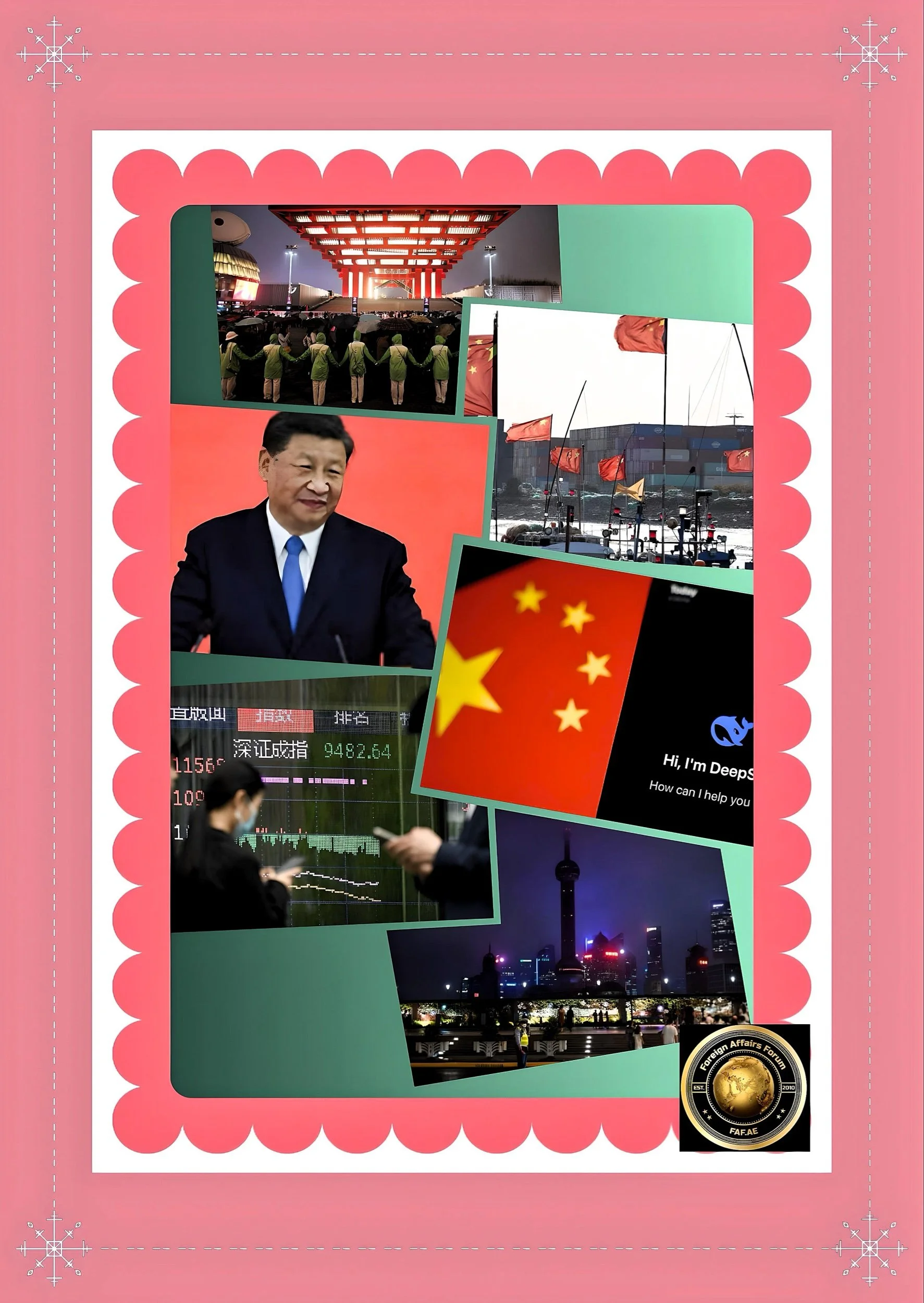Underestimating China: Why America Needs a New Strategy of Allied Scale to Offset Beijing’s Enduring Advantages
Introduction
The United States has experienced a whiplash in its strategic assessment of China, oscillating from alarmism about China’s inevitable rise to premature triumphalism about its economic challenges.
This pendulum swing in perception represents a dangerous miscalculation of the strategic landscape.
Despite recent economic headwinds, China maintains substantial structural advantages that require a more nuanced American response—specifically, a strategy centered on leveraging allied capabilities to counterbalance China’s formidable scale.
The Pendulum of American Perception
America’s assessment of China has vacillated dramatically over recent decades.
For years following China’s economic reforms, American policymakers watched as China’s blistering growth transformed the country into an economic powerhouse, leading many to predict China would inevitably surpass the United States as the world’s leading power.
This perspective intensified after the 2008 financial crisis and during the COVID-19 pandemic when China’s apparent resilience contrasted with American vulnerabilities.
However, the narrative has rapidly shifted. China’s recent economic challenges—including property market troubles, demographic pressures, and lackluster post-pandemic recovery—have fueled a new triumphalism in Washington.
As noted by Kurt Campbell and Rush Doshi in their Foreign Affairs article, “Yet just as past bouts of defeatism were misguided, so is today’s triumphalism, which risks dangerously underestimating both the latent and actual power of the only competitor in a century whose GDP has surpassed 70 percent of that of the United States”.
This analytical whiplash impedes the development of an effective long-term strategy. Current complacency could prove particularly costly, obscuring China’s enduring structural advantages.
China’s Scale Advantage: The True Strategic Challenge
The central insight emerging from recent analyses is that China’s fundamental advantage lies not in growth rates but in scale—the sheer magnitude of its industrial, technological, and military capacity.
This scale persists amid slower economic growth and gives China strategic leverage regardless of short-term economic fluctuations.
Industrial and Manufacturing Dominance
China has established unprecedented manufacturing capacity across numerous critical sectors:
China produces more industrial goods than the United States and European Union combined
It dominates the global production of electric vehicles, batteries, solar panels, steel, and rare earth processing
China’s shipbuilding capacity significantly exceeds America’s, with projections indicating China’s navy will grow from 370 to 435 ships while the U.S. fleet remains around 290 vessels
This manufacturing dominance extends beyond traditional industrial sectors into emerging technological domains, creating a foundation for economic and military power projection.
Technological Advancement
Despite Western perceptions of technological superiority, China has made remarkable progress in innovation:
China now files more patents and publishes more top-cited scientific papers than the United States
Chinese advances in hypersonics, nuclear reactors, and other cutting-edge technologies demonstrate significant research capabilities
China’s technological self-sufficiency is growing in many critical areas, reducing vulnerability to external pressure
These technological capabilities enhance China’s ability to compete in next-generation industries while potentially reducing dependence on Western technologies.
Military-Industrial Capacity
China’s industrial-scale translates directly into military capabilities:
Its military-industrial base is expanding faster than any in modern history, with unmatched shipbuilding and missile production capacity
China plans to build a nuclear force of 1,500 operational warheads by 2035, significantly altering the strategic balance
Military modernization continues across domains, powered by China’s industrial base rather than relying primarily on imported technologies
This military transformation directly challenges American regional dominance in the Indo-Pacific and increasingly projects power globally.
The Limitations of Current American Strategy
The United States has attempted various approaches to manage China’s rise, but these strategies have proven insufficient for multiple reasons.
Unilateral Approaches Fall Short
America cannot match China’s scale through unilateral efforts alone. Even as the U.S. has imposed tariffs and export controls on China, the efficacy of these measures has been limited:
While direct U.S.-China trade has declined, indirect reliance has increased, with other U.S. suppliers raising their imports from China by approximately two percentage points between 2017 and 2022
American tariffs on China now average almost 135%, according to the Peterson Institute, yet this hasn’t fundamentally altered the competitive landscape
The U.S. lacks the manufacturing capacity to independently compete across all critical domains where China has established advantages
Misalignment with Allied Interests
Current U.S. approaches have sometimes alienated potential partners rather than mobilizing them effectively:
Recent antagonistic approaches have complicated efforts to build cohesive alliances against China
As noted by experts, “Washington would be particularly unwise to go it alone in a complex global competition.”
Confrontational tactics without coordinated allies risk pushing neutral countries toward China’s sphere of influence
The failure to effectively engage allies represents a missed opportunity to offset China’s scale advantage through combined capabilities.
A New Strategy of Allied Scale
Given China’s structural advantages and the limitations of unilateral approaches, the United States requires a fundamentally new strategic framework—what Campbell and Doshi term “capacity-centric statecraft” focused on building allied scale.
Reimagining Alliances as Co-Creators of Power
Traditional alliance frameworks centered on U.S. protection of dependent allies must evolve toward partnerships that generate collective capacity:
Rather than viewing allies as security dependents, the U.S. should recognize them as essential co-producers of strategic capability
This means transitioning from a hub-and-spoke alliance system to an integrated network of complementary capabilities
As Campbell and Doshi argue, “China possesses scale, and the United States does not—at least not by itself.”
Components of Capacity-Centric Statecraft
This new approach would involve several key elements:
Coordinated Economic and Industrial Policy
Joint industrial development in critical sectors like semiconductors, advanced manufacturing, and clean energy
Coordinated investment screening and export controls to prevent technology transfer while maintaining innovation
Creation of larger, integrated markets that provide sufficient scale to compete with China’s domestic market
Defense Co-Production and Integration
Allied co-production of defense systems to increase production capacity and interoperability
Joint technology development programs that pool resources and expertise
Integrated defense planning that maximizes complementary capabilities rather than duplicating efforts
Collaborative Technological Innovation
Pooled research funding and coordinated innovation policies
Harmonized regulatory standards to accelerate the deployment of new technologies
Shared intellectual property frameworks that balance protection with diffusion
Institutional Architecture
New multilateral mechanisms for coordinating capacity-building efforts
Enhanced consultative processes to align strategies across domains
Crisis management protocols and confidence-building measures to stabilize competition
Implementation Challenges and Considerations
While the allied scale approach offers significant potential, its implementation faces substantial obstacles that must be acknowledged and addressed.
Sovereignty and Autonomy Concerns
Allied nations naturally guard their sovereignty and economic autonomy:
Countries may resist sacrificing industrial policies that benefit domestic constituencies
Security considerations might limit technology sharing even among close allies
Political cycles in democratic nations can disrupt long-term strategic commitments
Differing Perspectives on China
Not all potential partners share identical views on the China challenge:
Many U.S. allies maintain significant economic relationships with China. They are reluctant to jeopardize
Some nations prefer to navigate a middle path between the competing powers
Regional proximity to China creates different risk calculations for various allies
Implementation Complexity
The practical execution of capacity-centric statecraft presents significant coordination challenges:
Harmonizing regulatory frameworks across diverse economies requires sustained diplomatic effort
Building integrated supply chains necessitates overcoming protectionist tendencies
Maintaining strategic coherence across multiple domains and partners demands sophisticated statecraft
A Path Forward
Realistic Coexistence Through Strength
The ultimate goal of an allied scale strategy is not confrontation but establishing a stable equilibrium that protects core interests while avoiding catastrophic conflict.
This requires creating conditions for a “realistic scenario for coexistence” in which both powers accept certain limitations.
Core Elements of Stable Coexistence
Several analysts have outlined potential parameters for such coexistence:
A “core geopolitical bargain” where the United States accepts China’s continued development while China demonstrates it does not seek global hegemony
Establishing “protective scaffolding” through crisis management procedures, arms control, and cooperation on select global governance issues
Maintaining economic competition that does not intentionally damage the other side’s fundamental interests
Creating Conditions for Strategic Stability
The path to such stability requires the following:
Building sufficient allied capacity to deter aggressive actions
Developing crisis communication mechanisms to prevent miscalculation
Identifying limited areas for cooperation despite broader competition
Establishing predictable rules of engagement across domains
Conclusion
The Imperative of Allied Scale
America’s tendency to oscillate between overestimating and underestimating China represents a strategic vulnerability.
The current complacency regarding China’s challenges ignores the fundamental reality that scale—not merely growth—constitutes China’s most formidable advantage. This scale persists despite economic headwinds and demographic pressures.
The United States cannot match China’s scale alone. Only by fundamentally reimagining alliances as capacity-generating partnerships can America and its partners collectively offset Beijing’s structural advantages.
This requires moving beyond traditional alliance frameworks toward a more integrated economic, technological, and security cooperation approach.
While implementing such a strategy presents significant challenges, the alternative—attempting to confront China unilaterally or assuming its decline will solve the strategic challenge—carries far greater risks.
A strategy of allied scale offers the most viable path toward a stable international order in which both the United States and China can pursue their interests within sustainable boundaries.
The time for such a strategic transformation is now before the window of opportunity closes and China’s scale advantages become insurmountable even to a coordinated allied response.





